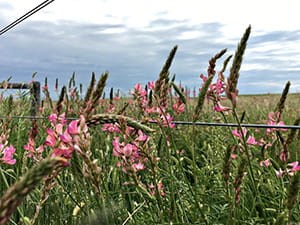OUTLOOK — Fall dormant seeding perennial forages can be a successful alternative to spring or summer seeding. Spring is generally the recommended time to seed perennial forages as moisture is often most abundant at that time. However, fall seeding can be done to lessen the seeding workload in the spring and wet areas that typically flood in the spring can be accessed to seed in the fall.
Timing is critical when fall seeding. If conditions are too warm, seeds may begin to germinate which can result in seed mortality. If conditions are warm enough for shoots and seedling to grow, the winter temperatures will kill the seedlings. These losses combined may result in poor forage stand establishment in the spring.
Recommended timing for fall dormant seeding is late fall, between October 15 and freeze up. The goal is for the forage seed to sit dormant over winter and not germinate until the following spring. Soil temperatures need to be below 2 C to prevent seed germination. A rule of thumb is to wait until air temperatures are 5 C or less before fall seeding.
There is a chance for seed or seedling mortality when fall dormant seeding forages, so it is recommended to increase seeding rates by 20 to 30 per cent compared to seeding rates that would be used in the spring. Forage seed is an investment, so giving the seed the best chance of survival is important.
There are several best practices for seeding forages, regardless of the time of year:
- Purchase good quality seed - Certified #1 or Common #1 is recommended.
- Seed at the correct depth. Forage seeds are generally small so be careful not to seed too deep.
- A firm seed bed is needed to ensure good seed-to-soil contact.
- Use the correct seeding rate. Increased seeding rates are recommended if fall dormant seeding, broadcast seeding, or seeding on a challenging site (i.e., saline soils).
- Perennial weeds should be controlled before seeding forages. It can be difficult to control established weeds in new forage stands, so it is best to start with a clean field.
- Ensure there is adequate soil fertility. A soil test can provide insight into what nutrients are available or what may be lacking.
Under the Resilient Agricultural Landscapes Program (RALP), the Seeding Tame Forage BMP provides funding for the conversion of annual cropland to perennial forage cover. To learn more about the program, visit our website or call the Agriculture Knowledge Centre at 1-866-457-2377.
— Keana Boere, AAg is Agri-Environmental Specialist, Outlook
Bookmark SASKTODAY.ca, Saskatchewan's home page, at this link.

